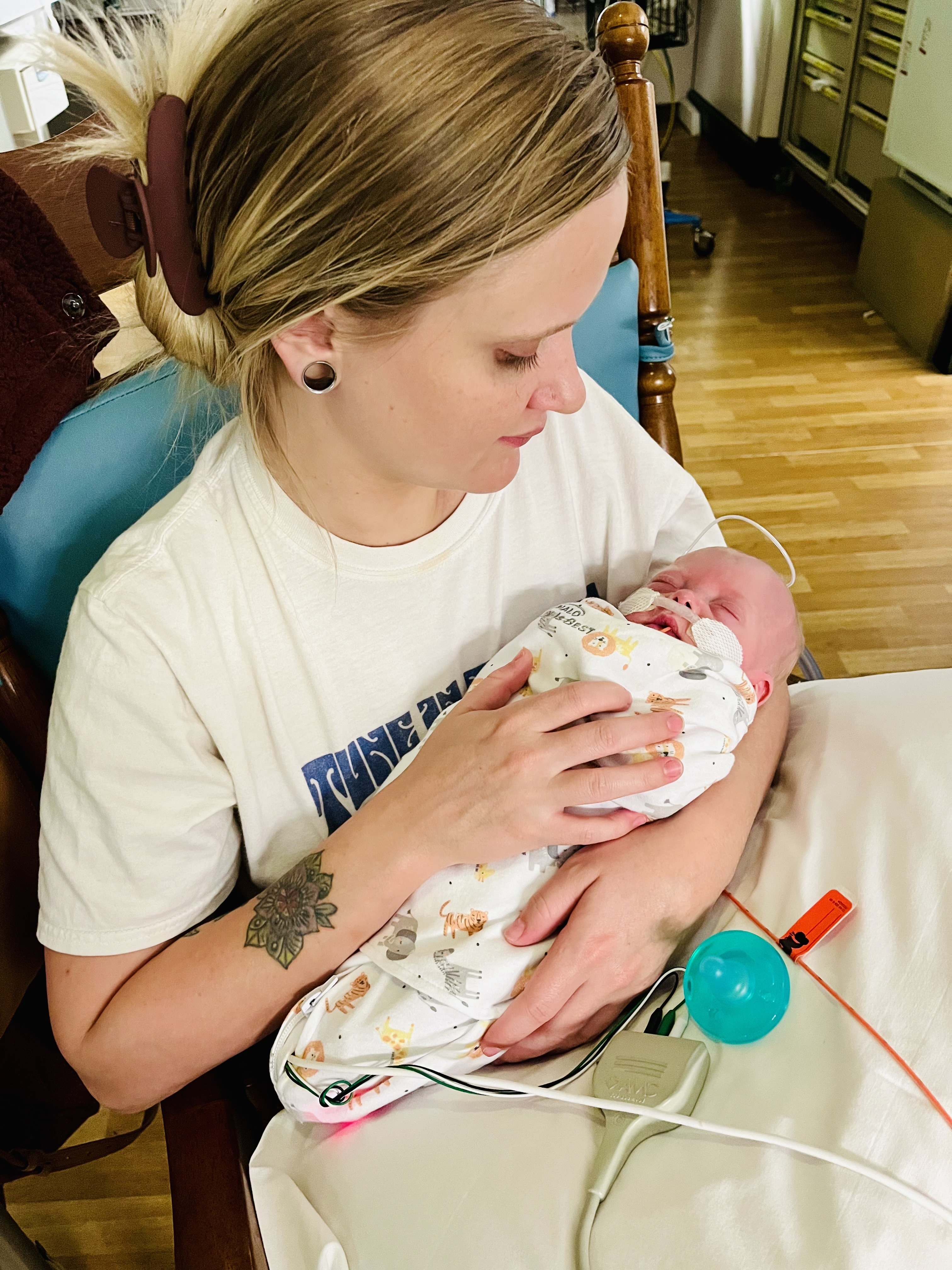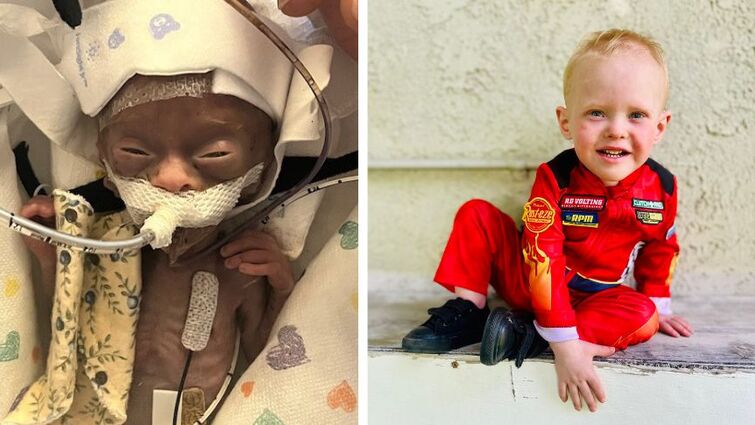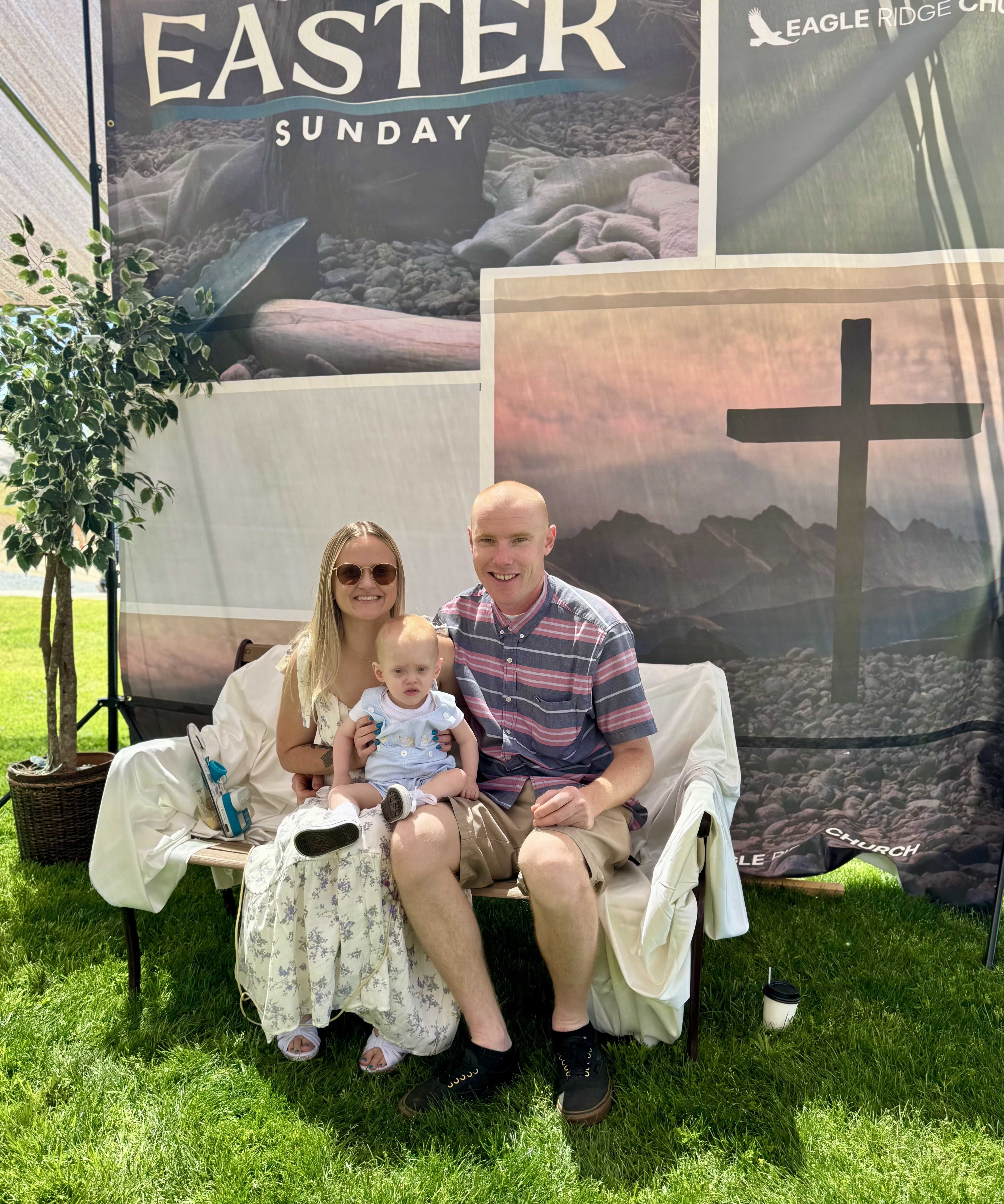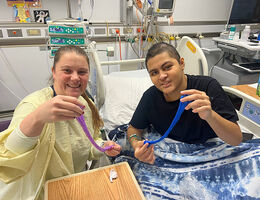

Noah O’Malley pictured in May 2023 during his stay in the NICU and now at two-years-old
When Sommer Maas gave birth to her son, Noah, in late May 2023, he weighed just 15.2 ounces, less than a pound, and arrived at 28 weeks. Barely the size of a loaf of bread, Noah immediately needed intensive care at Loma Linda University Children’s Hospital (LLUCH), where he would spend the next five months in the Small Baby Unit, a highly specialized corner of the neonatal intensive care unit dedicated to the tiniest and most fragile infants.
“He was just this tiny, tiny, little fragile thing,” Maas said. “I genuinely did not know if he was going to make it.”
Noah’s fight
Noah’s challenges began long before his birth. At 23 weeks, he only weighed eight ounces in utero. Doctors warned that if he were delivered at that size, he would almost certainly have disabilities. Maas endured magnesium drips and multiple hospital stays as her team tried to keep him in the womb until he was more stable. But at 28 weeks, Noah’s heart rate began dropping repeatedly, and nurses had to rush in constantly. He was in a breech position, so doctors performed a vertical C-section and handed him to the NICU team.
The emotional toll on Maas was heavy.
“I was so scared when I was having him, I wanted to run away in that room,” Maas said. “I never wanted to run away so bad in my life, but I stayed. I did it, and it’s really thinking about Noah. It’s not you anymore.”

Sommer Maas holding Noah in the NICU.
Noah developed pulmonary hypertension, struggled to breathe, and showed early signs of necrotizing enterocolitis, a dangerous intestinal infection that affects premature infants. Because he could not safely swallow or tolerate feedings, he eventually needed a gastronomy tube, a feeding tube that is placed directly through the skin into the stomach.
“He had a lot of complications,” said Munaf Kadri, MD, medical director of the Small Baby Unit. “These are not uncommon in premature infants, but Noah was definitely on the side of more severe complications. He was a very critical case.”
After months of vigilant care, doctors finally began seeing the signs they had been waiting for.
“The goal is simple at that point,” Kadri explained. “Can he breathe on his own? Can he maintain his temperature? Can he tolerate feeds? Those are the milestones that tell us a baby is ready to go home.”
By the time Noah was ready for discharge, he still required supplemental oxygen and his G tube, but he had stabilized enough to leave the NICU for the first time in his life.
Life after the NICU
Maas described the continued anxiety of keeping him alive at home on oxygen.

Noah with his parents Sommer Maas and Houston O'Malley
“Even being at home, we didn't know what would happen because he had to survive off oxygen, and if he didn't have it, he could die. It wasn’t until he started getting up around four pounds that I felt some relief,” Maas said.
Follow-up visits, physical therapy, and nutritional support are common, but the long-term outlook is overwhelmingly positive.
About 95% of premature babies at LLUCH do well and go home, according to Kadri.
Today, Noah is a lively two-year-old, walking, playing, and laughing.
A unit built for the tiniest fighters
The Small Baby Unit at Loma Linda University Children’s Hospital is the largest on the West Coast, caring for more micro preemies than any other center from California to Washington.
“Any baby who is premature is always a concern to us,” Kadri said. “We take it very, very seriously.”
Critically ill infants receive one-on-one nursing care and are supported by a specially trained team. Staff monitor every detail, minute by minute.
“We are involved right away in everything, their breathing, blood pressure, temperature. We even monitor the humidity inside their isolettes,” Kadri said.
The unit uses specialized care practices to support the tiniest infants. Every handling involves two-person, four-handed care to keep babies physiologically stable. Each morning, the entire multidisciplinary team, including doctors, nurses, therapists, nutritionists, pharmacists, case managers, and parents, reviews the care plan in structured rounds to ensure seamless communication. The team also relies on evidence-based protocols and advanced technologies, like non-invasive respiratory support and near-infrared spectroscopy, to monitor oxygen levels and reduce the risk of complications.
“No matter how severe the situation, no matter how ill your child is, there is hope,” Maas said. “People need to see Noah’s story because until it happens to them, they cannot really imagine it. We want to show parents that even a baby under a pound can survive and thrive.”
To learn more about LLUCH’s NICU and Small Baby Unit, visit online.



